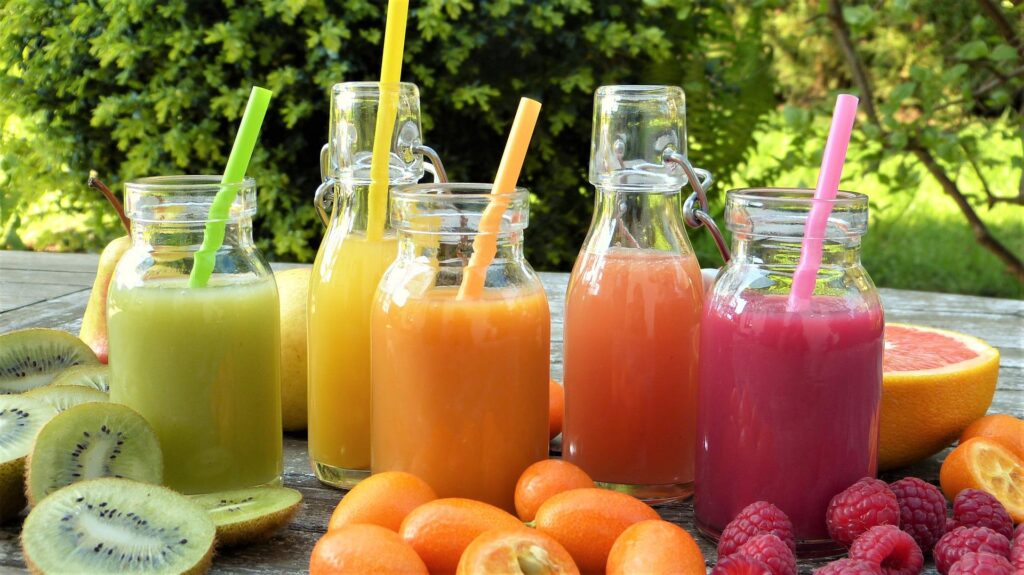With summer just about upon us, a lot of people will be breaking out their blenders and swapping lunches and afternoon snacks for smoothies and other lighter meal options. Most who have this tendency are familiar with popular smoothie ingredients: berries and bananas, kale and spinach, juice and milk (and milk alternative) bases, and perhaps the occasional kiwi or squirt of lime juice. The great thing about smoothies, though, is that beyond the basics, you can easily toss in some very healthy ingredients that you might not otherwise get much of in your diet.

Let’s take a look at some fun and healthy options for your summer smoothies:
Chia Seeds
Apart from being famous for the plant “pet” you bought from the infomercials in the ‘80s, chia seeds are also extremely healthy for you. Every 25 grams of chia seeds nets you 4.1 grams of protein, 158 mg of calcium, and 8.6 grams of fiber, according to BBC Good Food. Protein is an essential part of day-to-day diets, and that fiber content can help with digestive health –– and may reduce your risk of developing Type-2 diabetes. And there’s really no reason not to tap into these benefits!
One of the great bonuses of chia seeds is that they don’t alter the flavor of your smoothie, so you can essentially add them into any blend you’d like. For that matter, you can throw some on your morning fruit salad or into your cereal while you’re at it.
Apple Cider Vinegar
If you like sweet smoothies and “vinegar” sounds unpleasant, don’t worry: ACV doesn’t change the taste much. (It does, however, taste incredibly strong when you drink it in just water. Don’t do that.) Plus, you’re only meant to have 1-2 teaspoons per day, according to an overview at the Forbes Health platform. More than that can corrode the enamel on your teeth –– but just that small amount in your smoothie can be beneficial to your health. Specifically, the same ACV overview notes that the vinegar has been shown to reduce cholesterol and triglyceride levels in some small studies. It also may offer antimicrobial benefits.
Maca
Maca is a root veggie native to Peru, and it’s usually sold as a dry powder. Peruvians use it for alleviating menopause symptoms, improving mood, and increasing sex drive, among other things. Per a scientific examination at Hindawi, it can also help women who are suffering from antidepressant-induced sexual dysfunction.
While maca powder can be added to essentially anything, it’s most commonly found in juices and smoothies as well as warm drinks like coffee and roasted barley. As with cayenne or apple cider vinegar, a small quantity won’t affect taste much.
Beet Juice
Beets are ideal for smoothies, in that you don’t have too many opportunities to consume them otherwise, and they’re very healthy. Furthermore, it was pointed out in an article recently posted on the SymptomFind health and nutrition platform that raw beets have more health benefits. So if you really want to reap the rewards, and you don’t fancy chomping into a raw beet, juice in your smoothie is about your best option. As to those health benefits, the aforementioned article conveys that beets are high in nutrients such as nitrates (for reducing high blood pressure), betalain (which have antioxidant properties), and vitamin C (which is helpful for your immune system), among others. Studies have also indicated that beet juice is associated with improved muscle endurance and better performance in resistance training, which may make it particularly useful for that pre-workout smoothie.
As for what sort of mix to go for, it really comes down to whether or not you like the flavor. But combining beat juice with your traditional smoothie base of juice, milk, or water –– half and half –– is a great way to get a good amount of it into your diet.
Cayenne
That’s right: A small bit of cayenne pepper can be added to smoothies, even if they’re sweet ones. Chances are, you won’t even notice it. You may notice the benefits, though, which include clearing congestion and diminishing pain –– positive effects of the ingredient capsaicin, which is found in chili peppers (including cayenne). Cayenne is also high in several vitamins, and in particular vitamin A, which plays a role in preserving vision and strengthening immune systems.
Just don’t touch your eyes after handling cayenne, regardless of what form you use it in.
Ginger
Up next with the spicier ingredient options, ginger adds a bit of a kick to your smoothie without being overly spicy. It’s a well-known remedy to calm a sour stomach, and a study from Food Science & Nutrition also mentions that it can reduce nausea and vomiting. This makes it a recommended choice in particular for those dealing with morning sickness during pregnancy (or who may have chronic nausea for other reasons).
Ginger goes well with leafy greens and citrusy elements such as lemon, lime, grapefruit, and orange, making it suitable for a number of popular smoothie recipes.
Yogurt
A lot of smoothies call for milk or a milk alternative, such as almond milk or coconut milk. However, yogurt also has a place in smoothies. With probiotics that aid digestion and about a million different flavors to choose from, it’s a piece of cake to find a yogurt that will go well with the ingredients you’re already using in your daily smoothie.
To give you a sense of where you can go with the idea, some of the most popular flavors are vanilla, blueberry, and raspberry. Use any to thicken up your smoothie base, add those healthy probiotics, and boost the flavor all at once.
There’s no end to what you can do with a smoothie recipe. But you can always keep the kale and still explore some healthy, fun ingredients like these to liven things up! We hope we’ve given you some good ideas for those summer smoothies, and for more on food and drink ideas, visit my cooking adventures page.